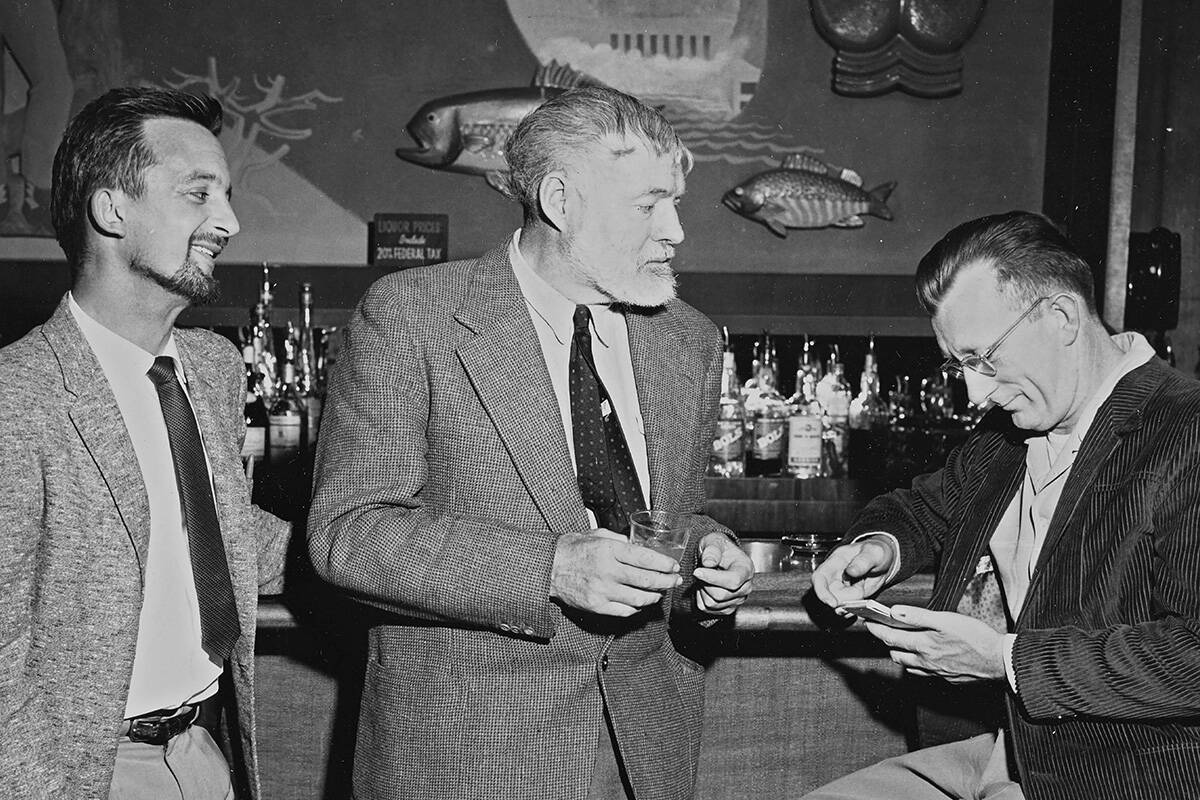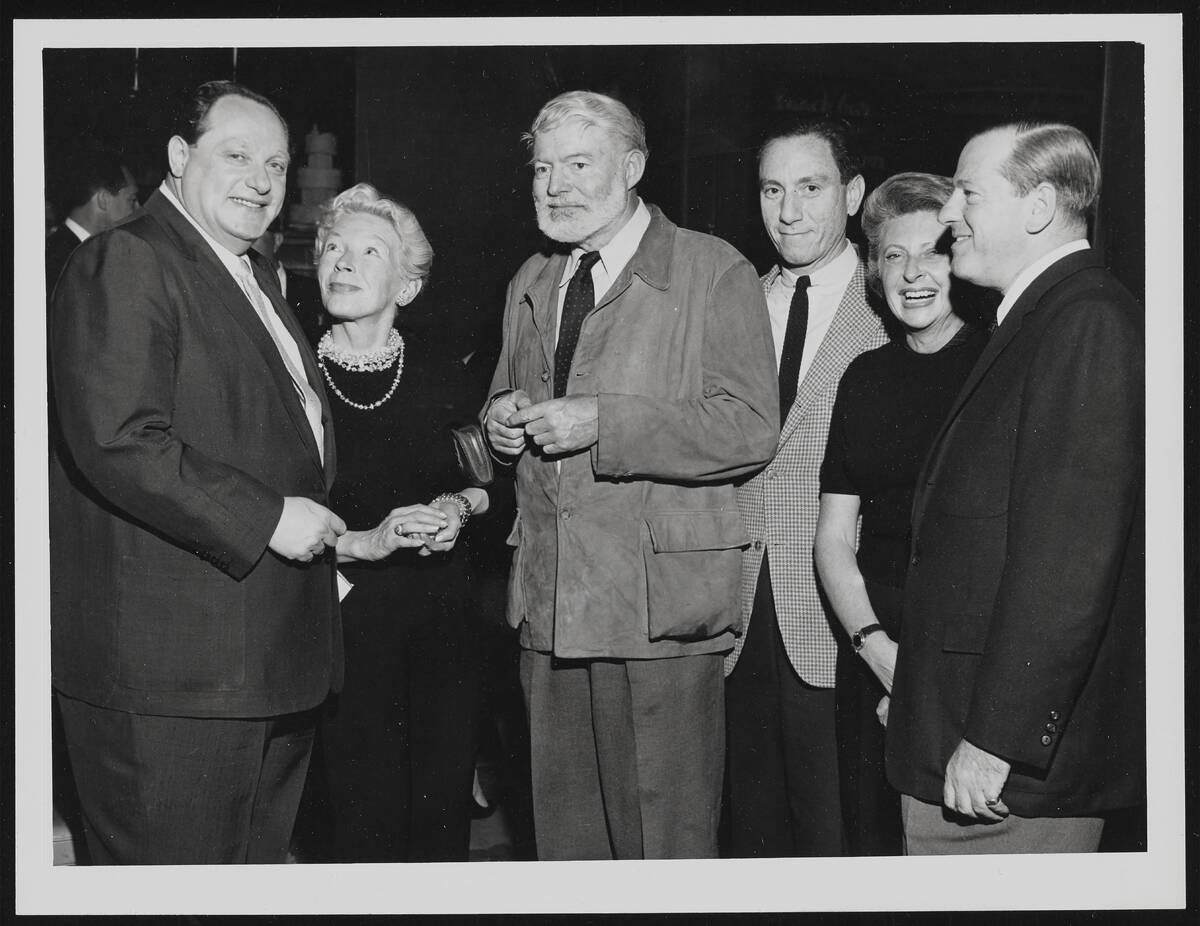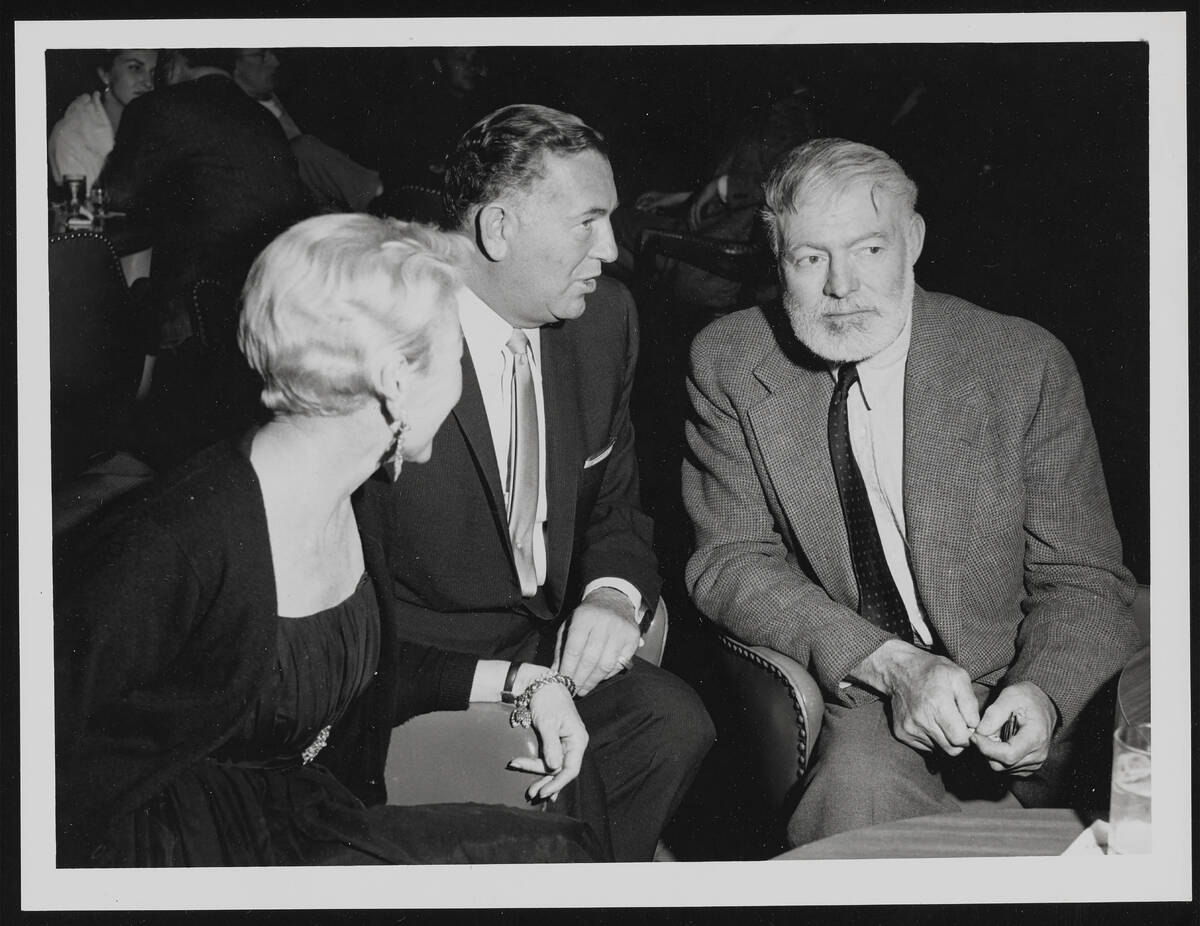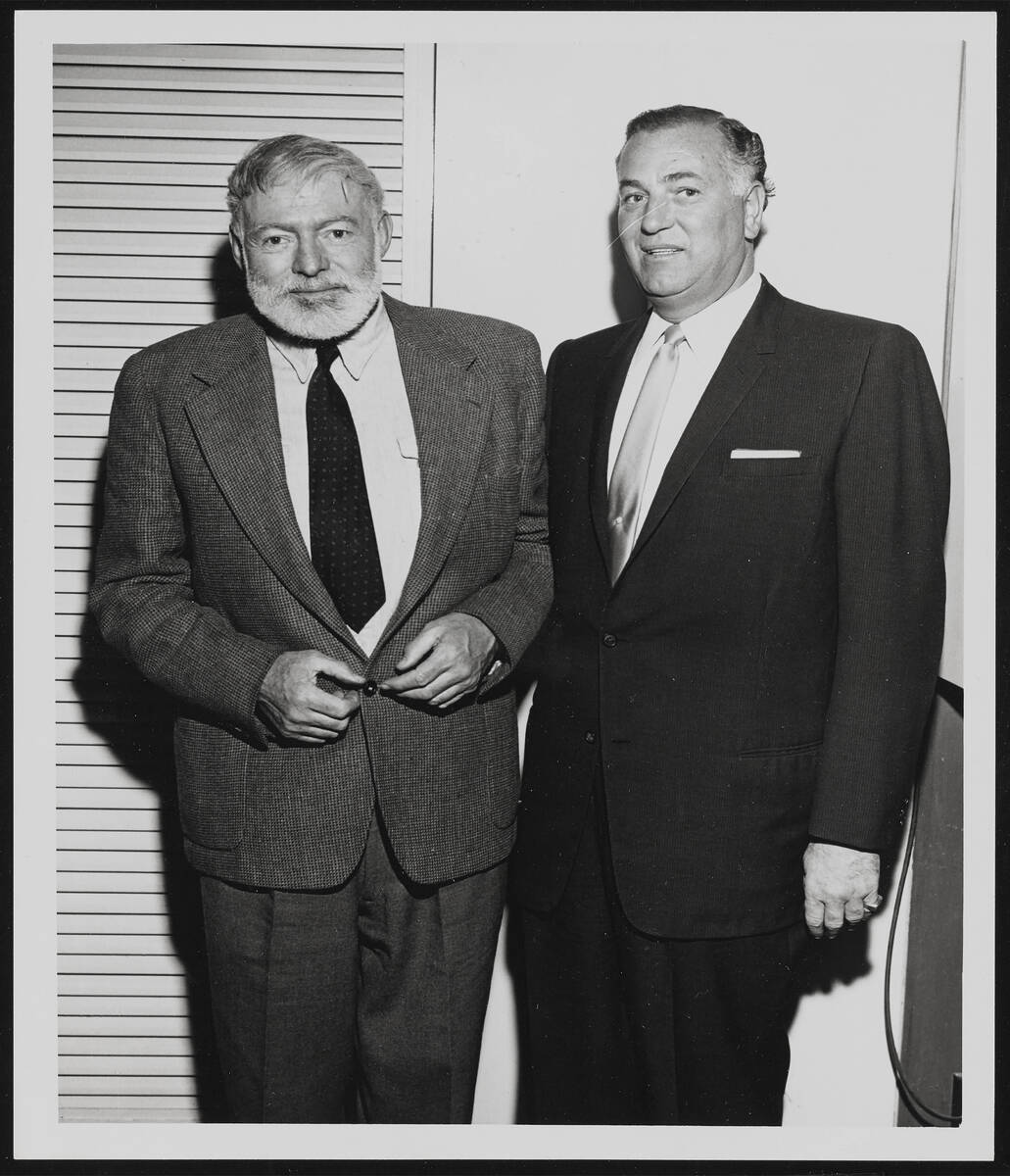Hemingway worked out, saw shows, drank on a visit to Las Vegas in ’59
In 1959, Ernest Hemingway, Nobel Prize winner for literature and arguably one of the greatest writers of his time, visited Las Vegas two years before his suicide in Ketchum, Idaho.
Hemingway arrived in town, his first and possibly his only visit to Las Vegas, on the evening of March 17 with his wife, Mary, to spend about a day and a half at the Sands hotel on the Strip, where he met well-known Sands executive Jack Entratter, according the Las Vegas Review-Journal.
The author, whose works included “The Sun Also Rises” and “A Farewell to Arms,” some of which were turned into major Hollywood movies from the 1930s to 1950s, came to Las Vegas with “Mr. & Mrs. Al Horwitz — he is the former Columbia Studio publicity chief,” wrote Review-Journal gossip columnist Les Devor.
Colin McKinlay, then a staff writer for the Review-Journal, interviewed Hemingway over drinks at the Sands’ Silver Queen bar, with the famed novelist wearing tweed clothing, a black tie with red dots and his gray hair “to the front partially covering his forehead.”
Out on the town
Hemingway, for years an avid boxer, worked out at the hotel’s health club that Wednesday, weighed himself (205 pounds) and later attended shows by singer Johnny Mathis at the Sands and the McGuire Sisters at the Desert Inn.
“He explained that he started on the physical exercise route after the plane crash in Africa a few years ago which nearly killed him,” McKinlay wrote.
“It was his remarks about living on gin and bananas which sparked a song by the same name, but Hemingway said he hadn’t heard the tune until a few months ago while on the present trip to the U.S,” the editor remarked.
Hemingway told McKinlay he was working on a book while on tour in the states, but noted “it’s bad luck to talk about it.”
Authors of the time who Hemingway said he liked included Vance Bourjaily, Wirt Williams, Wright Morris, Herbert Gold and Nelson Algren.
“I keep selectively in my head what I need to remember and the rest I throw out,” he told the editor. “Anybody who keeps a map in his head … he can easily refer to is nuts.”
On the subject of the 1958 filmed version of his famed novella, “The Old Man and the Sea,” for which he was a technical adviser, Hemingway said three 1,200-pound marlins caught off the coast of Peru were used to stand in for the large fish the main character — played by actor Spencer Tracy — had strapped to his small boat.
‘A helluva time to write a paragraph’
Hemingway advised that if a journalist wanted to write a novel, short of working an easy desk job, that person should leave the profession for another.
“You’ll be too pooped at the end of the day … You’ll use up all of your juice on the paper, and have none left for writing.”
“I had a helluva time to write a paragraph” while a Kansas City Star reporter prior to quitting his newspaper job to write books full time, he told McKinlay.
Hemingway recalled living on the edge while a young man in Paris and having to “take the bottles back” in order to afford food.
“Hold out, don’t compromise, everything eventually comes to he who waits,” he said, suggesting that budding authors should “always write everything the best that you can.”
About his white beard, Hemingway chalked it up to “a skin disease common to fisherman caused by the sun’s reflection on the water, and severely agitated by shaving.”
Hemingway left Las Vegas the morning of March 19 for a trip to Key West, Florida, where he was to take a plane to his home in Havana, Cuba, McKinlay wrote.
Later years
According to A.E. Hotchner, a close friend of Hemingway and author of the 1966 book, “Papa Hemingway: A Personal Memoir,” about their extensive travels, Hemingway and Mary months after the Las Vegas visit went to Spain and met Hotchner in Madrid to watch bullfights. In 1960, Hotchner went to Havana to edit Hemingway’s book manuscript about bullfighters, “The Dangerous Summer.”
Later that year, when they met in Hemingway’s Ketchum, Idaho, home, Hotchner heard friends of the writer express concerns that Hemingway had changed, looked bad, seemed depressed and uninterested in hunting. He was paranoid that the “Feds” were after him, according to Hotchner’s book.
Hemingway entered the Mayo Clinic in Rochester, Minnesota, twice in the coming months, where he was diagnosed with depression and received shock treatments. Doctors told Hotchner that Hemingway acted delusional but, encouraged by his interest in writing, they were going to release him from his two-month stay, Hotchner wrote.
But in Ketchum in April 1961, Hemingway’s mental health deteriorated and he was hospitalized. He told Hotchner he was unable to continue writing another book. He returned to the Mayo Clinic for two more months, suffering from phobias, delusions, anxiety and depression, requiring more shock treatments.
A doctor theorized his symptoms were due in part to Hemingway’s defense against recognizing his declining ability to write. Doctors released him that June and he returned to Ketchum. On July 2, 1961, Hemingway died by suicide.
Hotchner would later quote the famous author near the end of “Papa Hemingway:” “Man is not made for defeat. Man can be destroyed but not defeated.”
‘Like you felt you were there’
Prior to Hemingway’s funeral, Forrest “Duke” MacMullen, 36, a room clerk at the Tropicana hotel in Las Vegas and hunting companion and personal friend of the writer, was chosen to be a pallbearer and got the time off to be at the service, according the Review-Journal.
MacMullen told the newspaper that while working as a bellboy years earlier at a hotel in Sun Valley, Idaho, he met Hemingway’s son, Jack, who was a clerk there, and later fished and hunted many times with Jack’s father.
“I remember one time when he was talking about hunting in Africa,” MacMullen said in the 1961 news story. “He could give you details about everything. I mean it was like you felt you were there. He could tell you just how it smelled after a rain, and make you see how green everything was.”
Hemingway, he said, was “a very humble man who always had time to talk to anyone, whether he was a ditch digger or a diplomat.”
If you’re thinking about suicide, or are worried about a friend or loved one, help is available 24/7 by calling or texting the Lifeline network at 988. Live chat is available at 988lifeline.org.
Contact Jeff Burbank at jburbank@reviewjournal.com or 702-383-0382. Follow him @JeffBurbank2 on X.


























